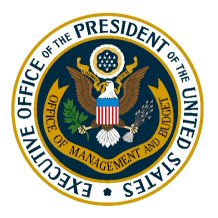The U.S. Patent and Trademark Office published a notice in the Federal Register inviting public comment regarding the Requirements for Patent Applications Containing Nucleotide Sequence and/or Amino Acid Sequence Disclosures (74 Fed. Reg. 40163).
Patent applications that contain nucleotide and/or amino acid sequence disclosures must include a copy of the sequence listing in accordance with the requirements in 37 CFR 1.821–1.825. The rules of practice require applicants to submit these sequence listings in a standard international format that is consistent with World Intellectual Property Organization (WIPO) Standard ST.25 (1998). The USPTO uses the sequence listings during the examination process to determine the patentability of the associated patent application.
Sequence listings that are extremely long (files larger than 600K or approximately 300 printed pages) are published only in electronic form and are available to the public on the USPTO sequence data Web page. The sequence listing may be submitted on paper, compact disc (CD), or through EFS–Web, the USPTO’s online filing system. Sequence listings for international applications may be submitted on paper or through EFS– Web only, though sequence listings that are too large to be filed electronically through EFS–Web may be submitted on a separate CD. Applicants may use EFS– Web to file a sequence listing online with a patent application or subsequent to a previously filed application.

David Boundy, the Vice President of Intellectual Property for Cantor Fitzgerald — and perennial watchdog of OMB burdens regarding new rules proposed by the USPTO — held a conference call with Dr. Richard Belzer (a former economist with OMB), and Donald Zuhn of the Patent Docs blog.
The sequence listing notice is not a new rule but a publication required as part of the various statutory and administrative processes that the USPTO is obligated to follow. Boundy and Belzer wanted to bring this Notice to light (a) because patent practitioners should know about the importance of providing comments and (b) because, at least historically, the USPTO has complied as minimally as possible with the Paperwork Act–in some cases, not at all–and it has relied on the fact that few members of the public understand the law and fewer still are willing to engage in the review process.
It is important to understand that if no one engages in the process, OMB tends to rubber stamp such procedures. The USPTO is obligated under the Paperwork Reduction Act of 1980 to prepare and accept public comment on an objectively supported estimate of burden and the practical utility of any information it requires, such as from patent applicants. This is called a 60-day notice. There’s also a 30-day notice which occurs later in the process, and in that notice agencies are obligated to respond to comments it has received.
For several recent rules, the USPTO neglected to publish 60-day notices. In the case of the notorious BPAI appeals rule, the USPTO issued the notice the day before promulgating the final rule. Boundy and Belzer were instrumental in getting the rules blocked — on the date it was scheduled to become effective (December 10, 2008) — and USPTO’s neglect of proper procedure was a significant issue in dealings with the Office of Management and Budget on the matter.
It is worth notice that the Notice provides that the USPTO estimates that it will take the public approximately ten minutes (0.17 hours) to one hour and 20 minutes (1.33 hours) to gather the necessary information, prepare the sequence listing, and submit it to the USPTO, depending on whether the listing is submitted on paper, on CD, or electronically. Furthermore, the USPTO expects that the information in this collection will be prepared by paraprofessionals [only] at an estimated rate of $90 per hour.
Although it does not disclose its methods for coming up with these estimates, the USPTO currently belieces that the end-to-end process of training staff, acquiring and setting up technology, gathering sequence information, validating it, formatting it into required form, burning it onto one CD for submission and another duplicate for your own records, preparing the CD for mailing, mailing it, record retention, and attorney supervision of paralegal staff, takes on average all of 15 minutes, which is billed at $90/hour paralegal rates. If you have an objective basis to provide your own estimate, then you may want to pass along your comments to the USPTO.
Comments are invited on: (a) Whether the proposed collection of information is necessary for the proper performance of the functions of the agency, including whether the information shall have practical utility; (b) the accuracy of the agency’s estimate of the burden (including hours and cost) of the proposed collection of information; (c) ways to enhance the quality, utility, and clarity of the information to be collected; and (d) ways to minimize the burden of the collection of information on respondents, e.g., the use of automated collection techniques or other forms of information technology.
Comments submitted in response to the notice will be summarized or included in the request for OMB approval of this information collection; they also will become a matter of public record.
Written comments must be submitted on or before October 13, 2009. You may submit comments by email to Susan.Fawcett@uspto.gov. Include A0651–0024 comment@ in the subject line of the message. Comments may also be submitted by fax to: 571–273–0112, marked to the attention of Susan K. Fawcett; or mail to: Susan K. Fawcett, Records Officer, Office of the Chief Information Officer, Administrative Management Group, United States Patent and Trademark Office, P.O. Box 1450, Alexandria, VA 22313–1450.
Mr. Boundy and Dr. Belzer stressed that the new USPTO administration appears willing to work with members of the patent community to improve all aspects of the examination process.
